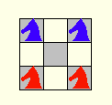End of the Road
Alas, CSC236 is coming to a close. The course has been challenging, especially in the last few weeks, but overall I’ve enjoyed the course. I think Professor Heap taught the material clearly and intelligently (and my course evaluation reflects that), and the TAs were absolutely amazing (wink wink). Seriously though, the few TAs that I talked to and my tutorial section’s TA have been helpful.
Assignment 3 went well, I think. Though, looking at the sample solutions now, my proofs are quite different. Good thing the sample solutions only represent one (for each question) of the possible solutions. Anyways, because of my other course work I had to complete the assignment the day before it was due, which was the same day my CSC258 final project was due. Between those two projects I spent 20 hours straight working from Thursday to Friday. Hopefully I won’t ever have to do that again.
In lectures this week we covered more about NFSAs, DFSAs, regular languages, and regular expressions. As of this writing I feel OK with NFSAs and DFSAs, but I’m lost on how to perform state combination to convert a state diagram to a regular expression. Obviously, that is something that I’ll have to study before the final on next Wednesday. Good luck to my peers and I hope to see you in CSC263!

